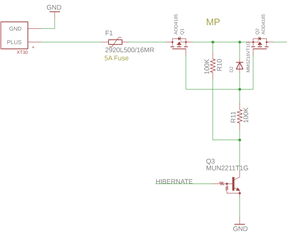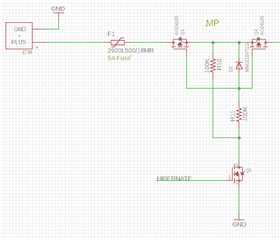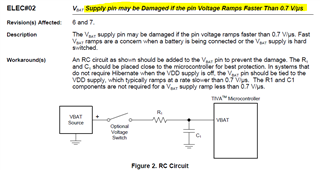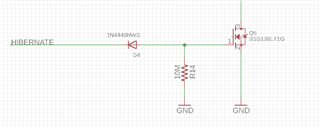Hello,
When using the nHIB pin on the TM4C123GH6PM to switch on/off an external power supply, if current is drawn from the nHIB pin, even in range of microAmps, the voltage on the nHIB pin drops, naturally.
In the event of an arbitary power disconnection, nHIB stays high, and since the switching mechanism still drains a little bit of current, and this drains the backup battery.
Let me clarify about the switching mechanism: it is a high side MOSFET switch, triggered by a BJT transistor, schematics below:

Basically, current drawn from nHIB pin by Q3: 1. causes a voltage drop on the voltage provided by nHIB pin, 2. causes the battery to drain when power is removed arbitarily.
I have tried many things, increasing the bias resistors, using a reverse diode to feed the gate of Q3, all with various results. Even if I use a 500kOhm for the base, it still consumes few microamps.
I also understand that if I was using a LDO like TPS73633 to switch the voltage to the circuit using the nENABLE pin, this would not happen.
I also tried changing Q3 with a discrete n-channel mosfet, (BSS138) schematics below:

Which works quite well, does not cause a voltage drop, and when power is disconnected does not consume more than the ~1.5microamps, which is the current drawn by tm4c123 in hibernate mode. It just is a little trigger happy, i.e. if you touch the gate, it will turn on. Or if the power is connected, without the vbat being connected, it will turn on. This does not happen when the battery is connected because nHIB will assert a low.
So this is my question: How can I switch on/off an external mechanism using the nHIB pin, without upsetting the hibernate module, i.e. causing voltage drop? What are the limitations on this pin current-wise? Or can a mechanism be employed to switch something on/off without spending current?
Best Regards,
C.A.



